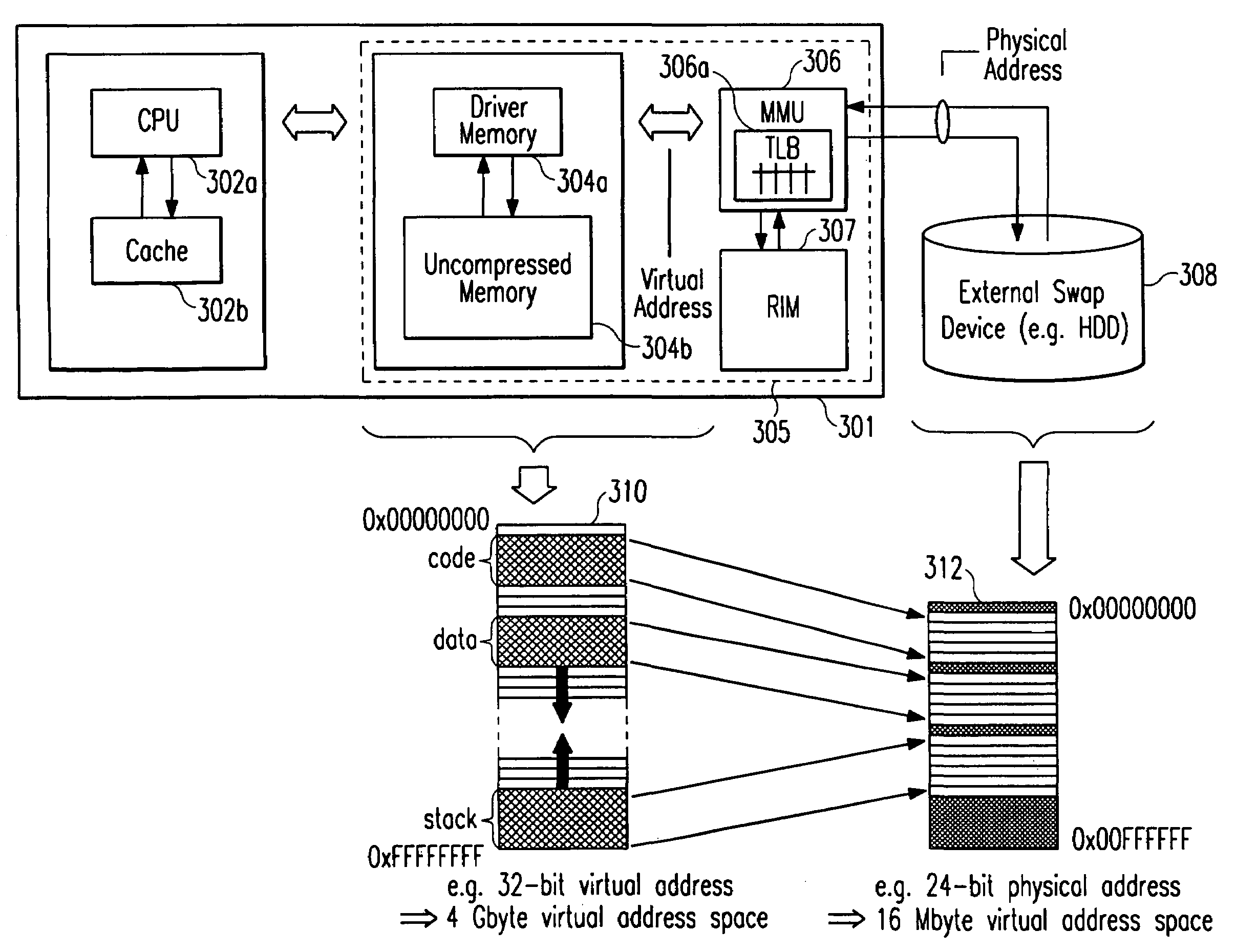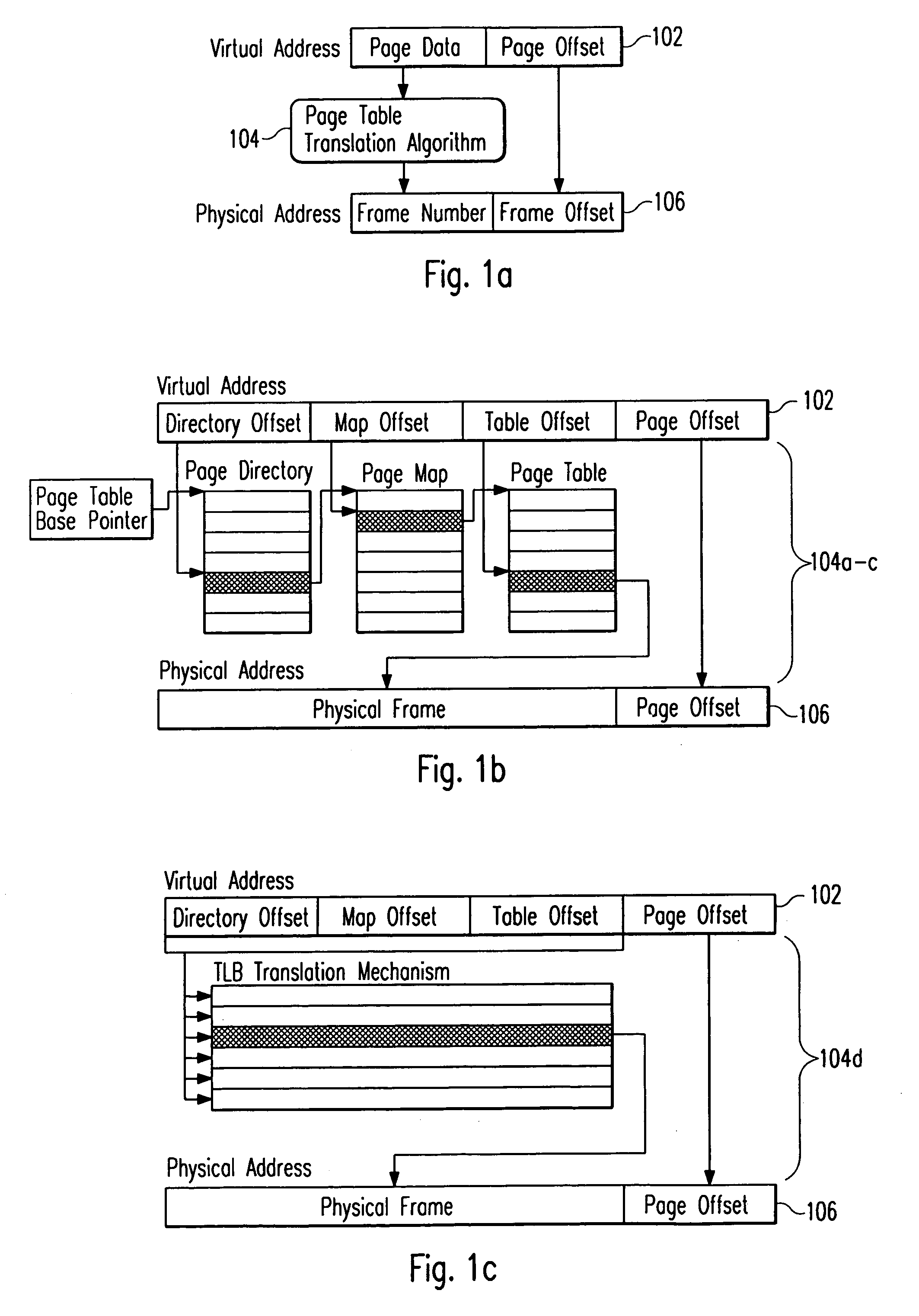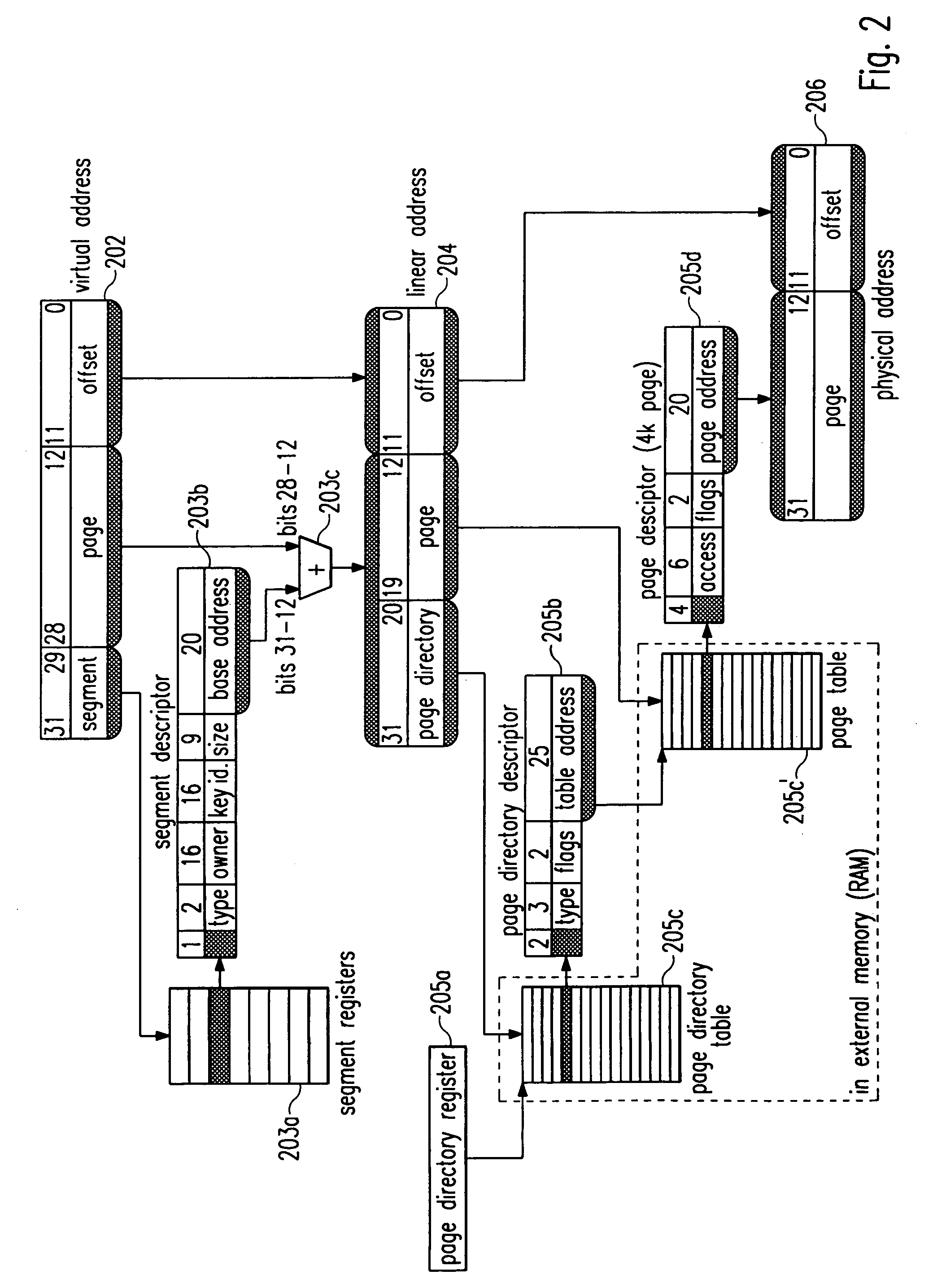Data compression method for supporting virtual memory management in a demand paging system
a data compression and virtual memory technology, applied in the field of data compression in a demand paging system, can solve the problems of not being easily ported across different operating systems, affecting the performance of computing devices, and affecting the efficiency of computing devices, so as to avoid time-consuming index searches
- Summary
- Abstract
- Description
- Claims
- Application Information
AI Technical Summary
Benefits of technology
Problems solved by technology
Method used
Image
Examples
Embodiment Construction
[0028]In the following, the invention will be explained in more detail with respect to special embodiments and in relation to the accompanying drawings.
[0029]A diagram which illustrates the process of translating a virtual address 102 used by an application program running on a computing device, said virtual address consisting of page data and a page offset, into a physical address 106 of a physical address space on a external swap device accessible by said computing device, said physical address consisting of a frame number followed by a frame offset, is shown in FIG. 1a. The applied translation algorithm 104 is typically based on the use of a “page table” supplied by a memory management system of said computing device. Even though said translation algorithm 104 may vary slightly between processors and may sometimes be implemented in software, modern processors all use roughly the same method for translating virtual page numbers to physical frame numbers by means of page tables, wh...
PUM
 Login to View More
Login to View More Abstract
Description
Claims
Application Information
 Login to View More
Login to View More - R&D
- Intellectual Property
- Life Sciences
- Materials
- Tech Scout
- Unparalleled Data Quality
- Higher Quality Content
- 60% Fewer Hallucinations
Browse by: Latest US Patents, China's latest patents, Technical Efficacy Thesaurus, Application Domain, Technology Topic, Popular Technical Reports.
© 2025 PatSnap. All rights reserved.Legal|Privacy policy|Modern Slavery Act Transparency Statement|Sitemap|About US| Contact US: help@patsnap.com



